
“You begin carrying a pack, canteen, food, full-weight rifle and a handgun strapped to your waist. After 14 days you don’t even want to carry the handgun.” – Kerry O’Day
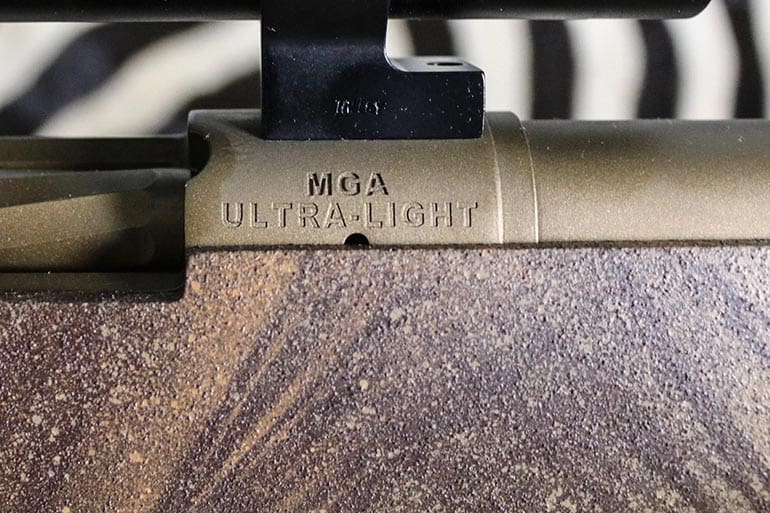
This review was born out of a series of conversations with MG Arms Owners, Carol and Kerry O’Day. Our interactions occurred during the Dallas Safari Club’s 2019 Convention.
Knowing a bit about the esteem with which they and their products were held, and the number of writers who were at the time pestering them for access to their products, I was a bit surprised by their willingness to send out a rifle to yours truly. The decision was made to have me work with the model that established MG Arms as a major, custom-firearms manufacturer, the Ultra-Light rifle.
I can’t remember who suggested the next detail, but as we sat and chatted in their DSC booth, we also agreed that the rifle they built for my review would be in a dangerous-game caliber. Though we discussed the .425 Westley Richards, Kerry et al. instead chose the storied .416 Taylor.

You might be asking yourself the following reasonable question: “How can an Ultra-Light rifle, chambered to a caliber designed for the largest of game, be enjoyable to shoot?”
Bear with me, and I will address this 1000-pound gorilla as the review progresses. Suffice it to say that I thoroughly enjoyed shooting the .416 Taylor Ultra-Light. My enjoyment can be chalked up to the artisanship of the MG Arms designers, engineers and gunsmiths.
.416 Taylor – John Wootters’ Choice
Chapter 7 of Craig Boddington’s Safari Rifles II is titled, ‘The .416 Revolution’. Those who are a bit older than a millennial (OK, way-older than a millennial), and who have, since childhood, devoured articles about the development and use of dangerous-game cartridges, might recall that until the late 1980s there were no U.S. factory cartridges for rifles in the .40 or .41 class.
In fact, in a March-April 1975 Rifle Magazine article in which John Wootters detailed the loads, accuracy and utility of his .416 Taylor for dangerous game, the editors inserted a note to explain why they were “…devoting so much attention and space to a rare wildcat cartridge….”
“A powerful .40 caliber is the only gap in the line-up of U.S. factory cartridges…Something quite similar to the .416 Taylor seemed the best bet…” with “…factory-chambered .416 Taylors specially made by both Winchester and Ruger…” indicating interest in this cartridge.
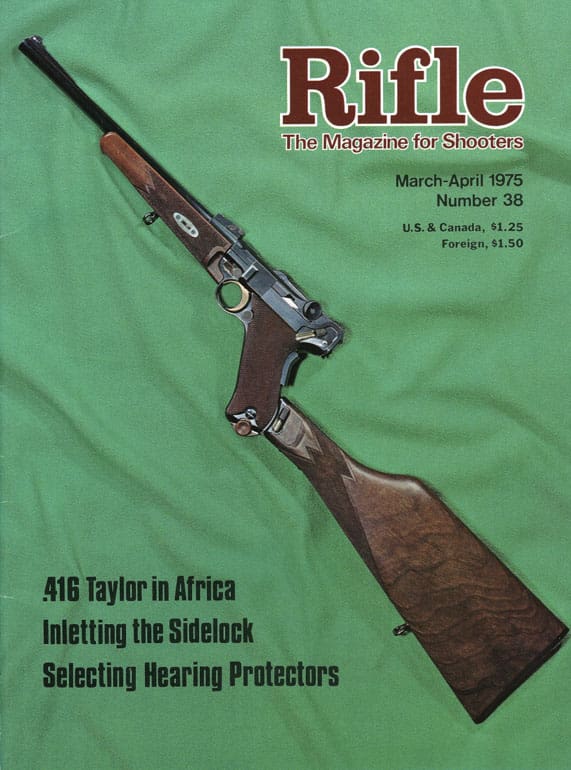
Wootters’ proved the effectiveness of the .416 Taylor cartridge for taking tough and/or dangerous game on his Botswana Safari; his rifle accounted for six Cape Buffalo, a lion, two wildebeest and a zebra.
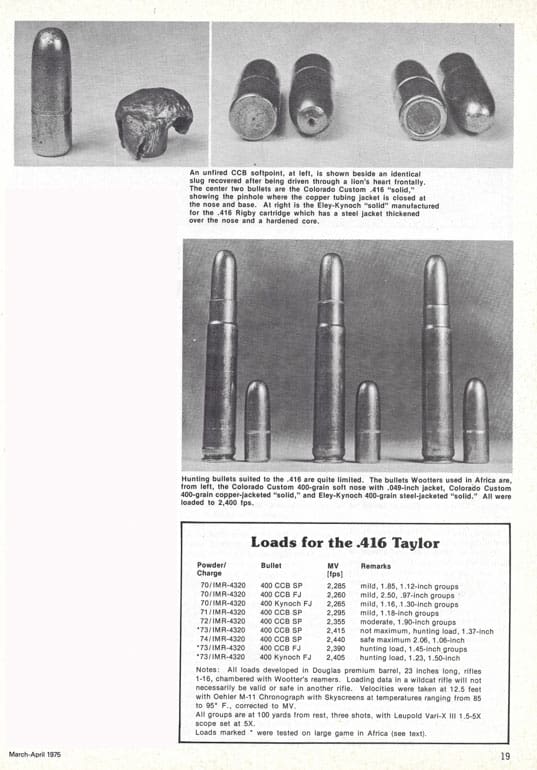
Though never adopted by one of the major rifle manufacturers, the .416 Taylor remains a wonderful cartridge for harvesting animals that tend to stomp into goo or slowly digest those with whom they become annoyed.
With that cheery thought, let’s move to the review of the MG Arms Ultra-Light rifle chambered in .416 Taylor.
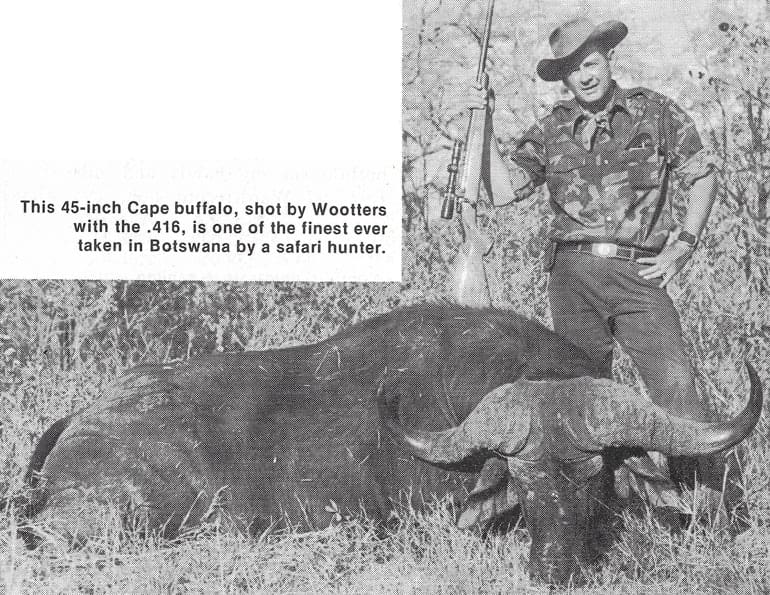
The MG Arms Ultralight
The MG Arms Ultra-Light built for this review lives up to its moniker. The rifle weighs approximately six pounds before mounting a riflescope. With the scope, bases, rings and three cartridges, it tips the scale at just over eight pounds.
Of course, that light weight is no accident. Kerry, Carol and their staff used a skeletonized Remington Model 700 action, an Ultra-Light National Match barrel and a 13 oz. Kevlar stock to trim as much carry weight as possible.

These components go a long way in explaining why the MG Arms Ultra-Light is, well, very lightweight. However, the rifle built for my review had more to it than just trimmed ounces. It was also equipped with the following: an AR-style extractor and a an incredibly crisp Jewell trigger (factory-adjusted to 2½ lbs.).
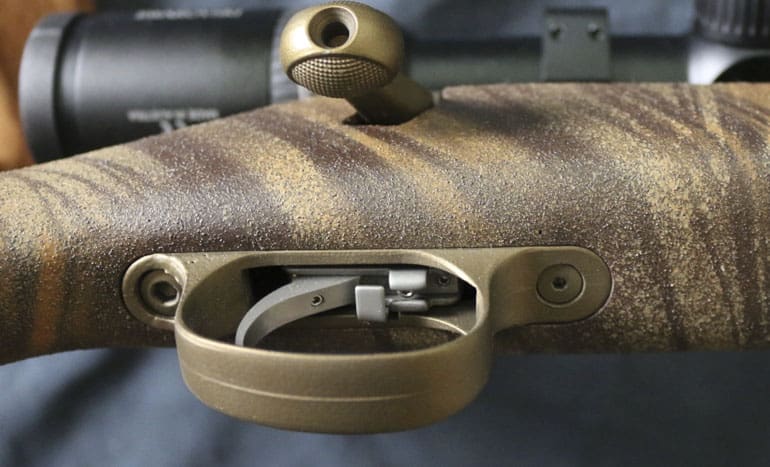
The MG Ultralight also sports a burnt bronze Cerakote finish on its metal components with a Fall Camo textured stock finish.
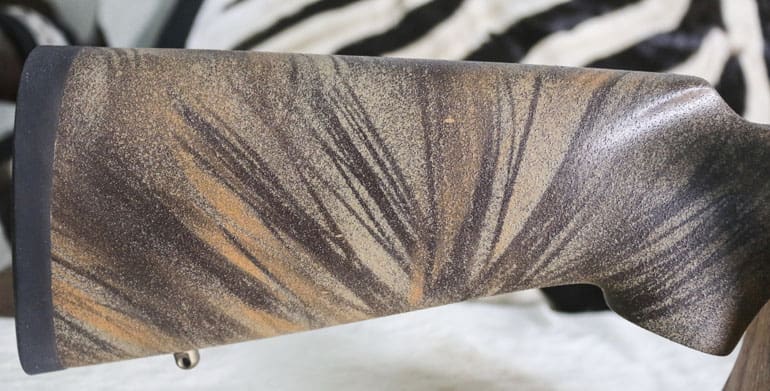
MG Shipped the Ultra-light with a 1-8X Swarovski Z8i riflescope and, for recoil dampening, a Pachmayr 1” Decelerator recoil pad and MGA’s ‘Super Eliminator’ muzzle brake (more about that in a bit).

Accuracy, Velocity and Power, Oh My!
In my interview with Kerry O’Day, I asked about the process they go through to check the accuracy of their firearms. He explained that the sighting-in phase for rifles starts with their loading 8 to 10 powder/bullet combinations. They then head to the range to fire approximately 30 cartridges.
In the case of the Ultra-Light they built for my review, this process involved three different powders matched with 400 grain Barnes Triple Shock or Swift A-Frame bullets. The most accurate and highest velocity combination was determined to be 71 grains of Reloder 15 and the Swift A-Frame.
The factory staff used this load to obtain a 100 yard grouping of three shots measuring 0.56 inches.
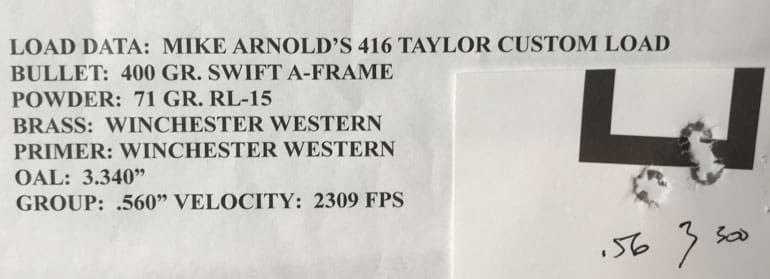
The MG Arms folks don’t lock the rifles into a support for sighting-in; the forend and butt of the stock are simply rested on sandbags. As Kerry and I discussed, this should give a much better baseline for those of us interested in the accuracy of rifles intended to be used for hunting.
Likewise, to better simulate rests used during dangerous-game hunts, I used shooting supports from Lilian Camalet of 4StableSticks. In this review, I used the ‘Ultimate Leather‘ model – a rest designed for shooting from a standing position.
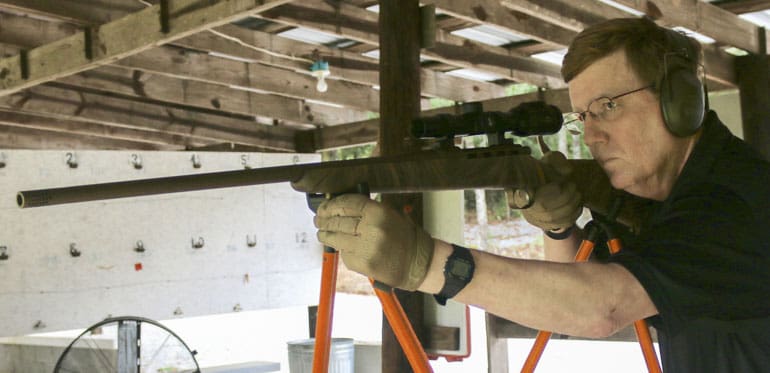
I was sent 40 cartridges by MG for my review. Of those 40, I used my LabRadar unit to chronograph 12 rounds.
The factory estimate of muzzle velocity was 2309 fps. My data were very similar: MV = 2280 ± 32 fps. The muzzle energy calculated for the 12 rounds was 4616 ft-lbs. To put this energy estimate into perspective, the .458 Lott and 7mm Remington Magnum cartridges shown below result in approximately 5600 ft-lbs and 2600 ft-lbs, respectively. For further perspective on the meaning of these values, we can turn once again to Boddington’s Safari Rifles II.
Craig states that the .450/400 3″ is the absolute minimum he would recommend for hunting African elephant. In a recent review of a double-rifle in this chambering, I recorded muzzle energies of approximately 3900 ft-lbs. With that in mind, the .416 Taylor would be more ‘adequate’ than the .450/400 3″ for hunting any large, tough, dangerous game – all the way up to and including elephant.
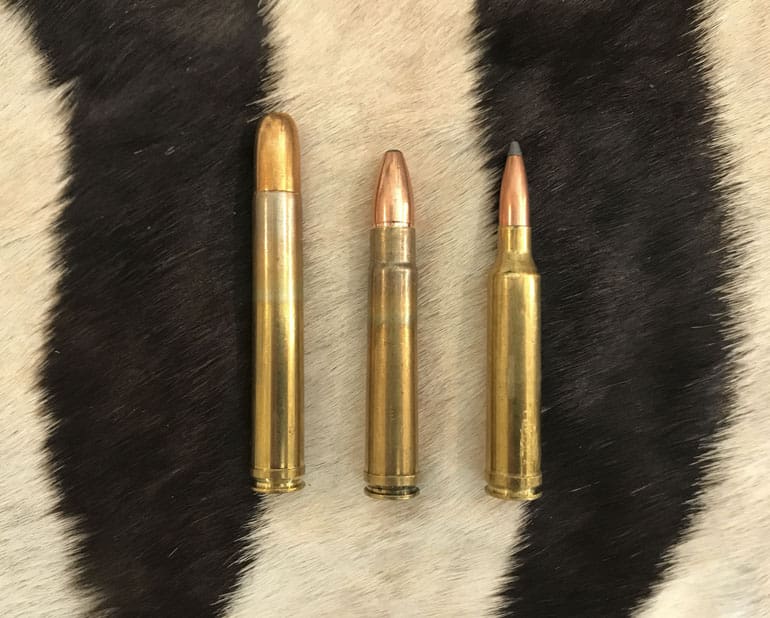
Though I never achieved groups as small as 0.56 inches, I did consistently obtain ~MOA groups at 100 yards. The photo illustrates my first (1.4 inches) and last (1 inch) groups achieved during my initial range session.
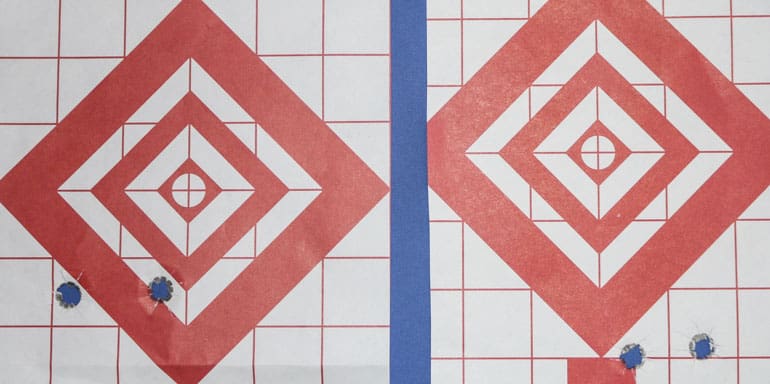
Keeping in mind that 1) the .416 Taylor was designed as a cartridge for large, tough and dangerous game, 2) it would be unwise/unethical to shoot at such game from much beyond 100 yards, and 3) buffalo, elephant and lion would have a heart-lung area of many square inches, near-MOA groups reflect excellent accuracy. They’re also an indication of the excellent quality achieved by the MG Arms gunsmiths.
Is the MG Arms Ultra-Light in .416 Taylor Lethal at Both Ends?
It is perfectly understandable that shooters encountering an MG Arms Ultra-Light for the first time might be concerned about recoil. They may be even more reticent about pulling the trigger, so to speak, if the Ultra-Light happens to be chambered in a dangerous game caliber.
However, it’s also quite understandable that the MG Arms staff might occasionally become weary of having to address the issue of recoil. This is what occurred at one convention when a potential buyer stated flatly that such a light rifle must be horrible in the felt-recoil department. The harried staff member answered that the would-be expert was correct “Each time you pull the trigger, it will flatten you!” Hence the title of this section.
Why might the Ultra-Light in .416 Taylor be expected to kick the shooter into next Thursday? Physics, plain and simple.
The trigger is squeezed, an explosion occurs that sends the projectile down the barrel at a certain velocity, the rifle moves away from the rapidly-departing bullet and the shooter’s shoulder and/or face is in the way of the retreating stock.
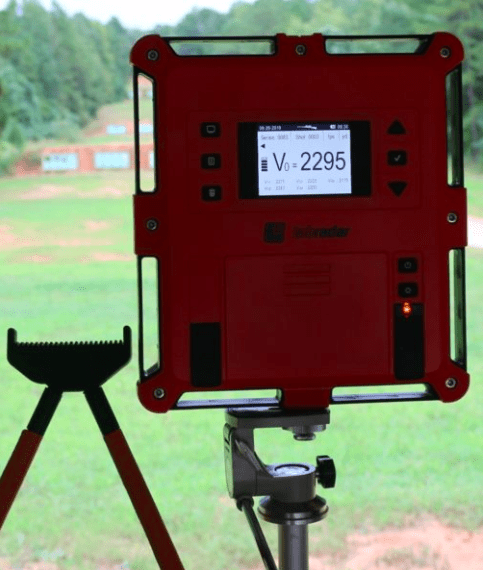
All things being equal (they rarely are): large projectile + high velocity + light rifle = significant felt recoil. The recoil can be broken down into two components, the amount of energy (ft-lbs) and the speed (fps). Let’s go back again to our triumvirate of 7mm Magnum, .416 Taylor and .458 Lott.
The recoil energies for these are: 9.0 ft-lbs, 47.8 ft-lbs and 70.4 ft-lbs, respectively. The recoil speed for each is 12.5 f.p.s., 17.5 f.p.s. and 21.3 f.p.s., respectively. In other words, the .416 Taylor has recoil energy and speed that is bit closer to a .458 Lott than a 7mm Magnum.
You might be wondering why I’m belaboring this point. With relatively few exceptions, the number one concern of shooters is felt recoil, followed closely by gun weight. It’s no good arguing that the shooter won’t notice recoil when hunting because of excitement and their concentration being on the game.
Before they become ‘the hunter’, they have to spend significant time being ‘the target shooter’. If a rifle recoils beyond what a shooter can withstand they will 1) not go to the range enough to become proficient for hunting, and 2) flinch when they pull the trigger.
The rifles used for the estimates of the energy and speed of recoil weighed 10 lbs. As already mentioned, the MG Arms Ultra-Light built for this review weighed a mere 6 lbs 2 oz without a riflescope and just over 8 lbs with a scope and three rounds.
Two pounds may not sound significant, but in the world of heavy calibers, weight and proper stock fit can make a huge difference in dampening felt recoil. Or not!
In the case of the MG Arms Ultra-Light the stock fit me very well. Even so, I have a bad tendency of ‘crawling’ the stocks on rifles. I did this on the third set of .416 Taylor cartridges. I know this because the eye-relief on the Swarovski scope was more than adequate to keep the bridge of my nose out the line of fire, unless I crawled my way closer.
Though I didn’t shed blood, I had a beautiful bruise for several days.
I relate this anecdote to indicate that the .416 Taylor is a dangerous-game caliber and — yes — it produces significant recoil. All things being equal, launching this caliber from an 8 lb rifle should have resulted in me sprawled on the concrete pad of the rifle range.
This did not happen. In fact, even though I collected enough data from my first session, I took the rifle back to the range a second time. I actually liked working with this MG Arms model and caliber.
The 1-inch Pachmayr recoil pad and the patented MG Arms muzzle brake made shooting this rifle not only manageable, but enjoyable. Yes, any 8 pound rifle in a caliber that produces >4500 ft-lbs of muzzle energy will bump the shooter. But, the recoil pad and brake on the MG Arms Ultra-Light reduced the energy and speed of that bump as well as muzzle lift.
This rifle really was a pleasure to shoot at the range. I’m convinced it would be even more fun to shoot when hunting something large and potentially destructive to the hunter.
To answer the question posed in the heading: The MG Arms Ultra-Light in .416 Taylor is only lethal if you are standing in front of the muzzle.
Specifications: MG Arms Ultra-Light Rifle
Caliber: .416 Taylor
Action Type: Remington 700 – skeletonized, squared and lapped with AR-style extractor
Capacity: 3 (2 in magazine, 1 in chamber)
Overall Length: 45”
Barrel: SS National Match
Barrel Length: 23” + brake
Muzzle Brake: MGA Super Eliminator
Weight: 6 lbs 2 oz without riflescope
Stock: 13 oz Kevlar; Fall Camo Finish
Recoil Pad: 1” Pachmayr Decelerator
Trigger: Jewell
MSRP: $3,995 ($6,319.95 with 1-8X Swarovski Z8i riflescope and one box of custom ammunition)
Ratings (out of five stars):
Style * * * * *
I love the look of wood stocks and traditional bluing. However, the rifle I have carried on hunts throughout North America and in Africa wears a dark gray synthetic-stock and rust-resistant finish. The MG Arms Ultra-Light is very stylish, its particular style reflecting its niche as a super-light, and yet incredibly durable, rifle. It will look very good in photos with game taken.
Fit and Finish: * * * * *
The stock fit was perfect for my build (5’11’’ with long arms). All metal and stock finishes — inside and out — were excellent and will be ideal for extreme conditions. The stock texture, in particular, will prevent slippage in hands sweaty from exertion (and fright). This is a beautifully make hunting rifle.
Accuracy * * * * *
Excellent. 100 yard MOA was accomplished during my first session. This is a rifle and caliber intended for dangerous game. No one should be sniping at such species. Distances will likely be within 100 yards and frequently much less. Even so, this rifle and caliber have the accuracy and power to handle 100 yard shots at dangerous game.
Ergonomics * * * * *
The rifle is named Ultra-Light. It’s easy on the muscles of the non-marathon runner. However, the balance of the rifle was also excellent. When aiming without a rest, I found it to balance well between my trigger- and support-hand.
Reliability * * * * *
Absolutely no feeding, or any other, issues with any of the cartridges. This is incredibly important given that lives could very well depend on swift, clean chambering given the game hunted with this gun.
Overall * * * * *
The look, feel and operation of the MG Arms Ultra-Light model reflect the highest-quality design, engineering and manufacturing. All moving parts were wonderfully smooth. The Jewell trigger – set light for range work – was incredibly crisp with the cleanest of breaks. This is a rifle I would happily carry on any African safari.
Mike Arnold writes about firearms and hunting at his blog Mike Arnold, Outdoor Writer.
The following people and businesses made this review possible: Kerry and Carol O’Day (MG Arms); Tom McElwayne (Shooters Den); Tracy Ledbetter (Gun Racks for Less); Lilian Camalet (4StableSticks); and Wolfe Publishing Co.

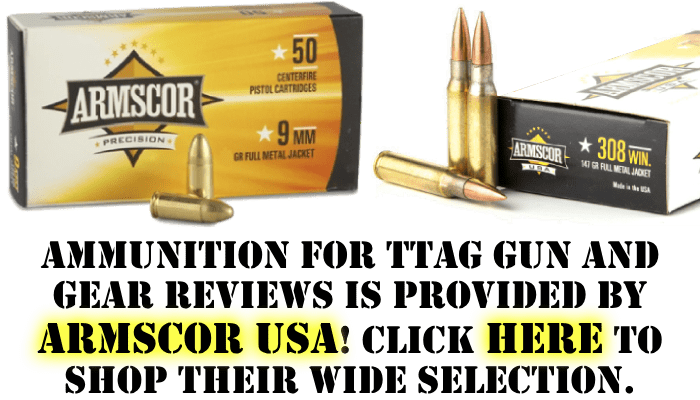
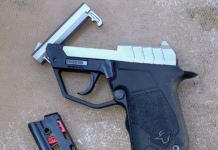
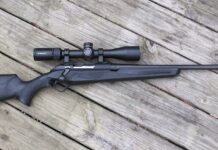
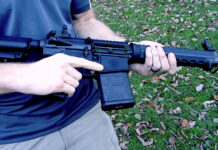
The recoil table the author links to shows that the 7mm Rem Mag recoils at about 20 ft-lbs, not 9. Still not anywhere in the range of the .416 offerings, but let’s get the facts straight first.
My 7mm Mag is much easier to shoot from my Browning BAR than I thought it would be when I first got it. Luv, luv, luv the BAR.
You are absolutely correct! I slid a column to the left and wrote down an incorrect value. Thank you for setting this straight! Mike Arnold
Otherwise, an interesting article that introduced me to two new cartridges.. Until today, I had only known of the .416 Rigby cartridge.
Pricey, pricey, pricey…
Pointless, pointless, pointless.
I don’t want to carry a medium weight rifle because it will fatigue me……but I’ll carry out over 100lbs of game just fine.
I would assume if you can afford the rifle and the hunt, you are probably paying a guide to pack the meat out for you.
I built a 416 Taylor on a Ruger MKII came from the smith at 8 pounds with scope.
After the first couple of shots I glassed bedded it and added 1.5 pounds of shot.
It is nice to shoot at 10lbs loaded and scoped.
Now days I would not do another Taylor but go with the 416 Ruger one can get the same and or more performance as the Taylor. If I didn’t have all the 416 brass I needed I would have it reamed to 416 Ruger.
Ii is a nice thumper having shot every thing from Pdogs to 500 plus pound black bear.
Turns bad porcupines into very good porcupines.
And have readily available factory ammo it one wants.
I get so lost when it comes to rifle chamberings. If it ain’t one of the big four (my term for 5.56, 7.62×39, 7.62×51, and 30-.06), you could pretty much fill a thimble with what I know.
Which still puts me ahead of most MSM journalists, of course…
With a .30-06, you can hunt literally anything in North America. You would need to choose your load properly, but there’s no “need” for anything else if you can put your shots where you want them.
So.. serious question for ya DG. While I agree ( and not sure if any could even DISagree) that the 30.06 can take anything in America, couldn’t anything 308/6.5 cal do the same if shot placement is precise? Outside of the truly large Africa game (elephants etc..)
I can see the need for larger depending on extreme size or extreme distance but couldn’t both those variables and obstacles be choice rather than necessity. I could take a 600 yard shot, but how often does it become standard and closing the distant not become an option?
The downside for the .308 is when you start to move to heavier bullets (> 175 grain), you start to run into two things:
1. Many .308’s were built with 1:12 twist rate barrels, which is just fine up to 175 grain jacketed bullets. For the 175’s all-copper bullets, it might be a bit too slow a twist even at 175 grains.
From 180 grains and up, you really want a 1:10 barrel twist. The 1:10 is the default for a .30-06, and the 1:12 was fairly standard on many .308’s early on, because the slower twist gave somewhat higher muzzle velocities.
Above 180 grains, you’ll want the 1:10 barrel.
2. Above 180 to 190, you’ll start having to seat the bullet deeper into the case on some .308 rifles, because the .308 chamber wasn’t designed for long leades for heavy bullets. The .30-06 can handle up to 220’s without having to seat the bullet too deeply in the case.
There’s nothing “wrong” with the .308. It just isn’t a .30-06, with all that entails – namely, being designed for a bolt-action rifle, potentially using heavy bullets, which means .30-06’s are almost all 1:10 twist barrels.
Thank you
Apparently I’ve been banned under the jwm moniker. Must be for challenging vlad/pg2. Oh well, TTAG was a nice ride while it lasted.
What!?
They should ban that blooksucking bot.
Cmon TTAG
Another fine rifle no one can afford and fewer would want to shoot.
Well written and easy to understand.
I can’t afford it and I hate being abused by a gun. No sale.
I can’t imagine that long a barrel adding anything but weight to that cartridge.
The O’Days are super nice people. Got to meet them at the Reno sheep show a couple of times.
I like my .416 Rigby heavy, but now I’m wanting to add a brake.
I don’t see a safari in my future plans so I’ll stick with my .308 bolt gun
I learned some time ago that these very light, heavily chambered hunting rifles are a solution in search of a problem… and when they find a problem to solve, they bring along at least one, and sometimes two, problems they create.
The problem they claim to solve is the one where the hunter grows weary of hauling around a 10lb rifle. The problem they invariably bring along that they don’t solve is “how can you withstand the recoil long enough to become good at shooting these rifles?” And the answer is, unless you’re a masochist, you can’t. After I shot a light, snappy rifle enough, I developed a flinch. That’s counterproductive, especially if one has to snap-shoot at a target moving towards you. I now hunt with 8+ pound rifles, and I look at the weight issue as the cost of being a good shot with the rifle.
The .416 Taylor solves (IMO) only one gunsmithing issue with a dangerous game cartridge: it fits into a standard-length action. Which means that you could fit it into a surplus Mauser 98 action (if you open the bolt face a bit or get a different bolt). But, as I’ve said several times here at TTAG, there is almost no new cartridge invented since 1960 that solves any ballistic problem that wasn’t already solved – and in this case, there’s a cartridge that would work just fine, albeit in a magnum-length action: the .404 Jeffery. The .404 Jeffery was (IMO) a better cartridge for a bolt action rifle than the .416 Rigby. But, I’ve only shot a couple of these rifles on a nice, calm shooting range ie, I’ve never had to test them under ‘dangerous game’ conditions, where something was “coming right at us!” (cf South Park).
The .404 Jeffery is a tad older than the .416 Rigby – the Jeffery dates from the same year as the 9.3×62 Mauser, a mid-range cartridge for big game, also designed in 1905.
As I said, there really aren’t many “new” developments in cartridges after about 1960. It’s been mostly hype, spin and marketing… including the .458 WinMag.
I would agree.
I got my .416 Rigby from a friend just before he unexpectedly died. So it’ll be a keeper in my collection. It’s a big ol’ CZ 550.
For most African critters I normally take my .375 H&H. If I can swing a cape buff hunt, I’ll be taking my .470 nitro double. I shoot it just enough to stay proficient, but not enough to get that “flinch.”
And what butt pad do you use?
I agree. Heavy calibers go in heavy guns. Out in the woods or brush all day? Hit the weight room first. You’ll be stronger and live longer.
Plenty of moms carrying babies weighing 9-14 pounds, you’d think grown men could handle that.
Yes, well, there is that.
I can understand why a hunter wouldn’t want to pack around a 25 pound “stopping gun” (as the 2 bores and 4 bores were called in their day), but a 10lb rifle? That’s pretty much what a service rifle weighs, right? We pay lots of young men to pack that, and a whole lot more, around all day, every day.
For under 200 yards I believe a slicked up Marlin in 45-70 with the right ammo will do the trick. Garret Hammerheads or Underwood Extreme Penetrators. Lightweight and easy to handle. And much easier on the wallet and shoulder.
The rifle and ammunition combo you’ve referenced will indeed take any animal on earth at reasonable distances. It’s not, however, a lightweight rifle. An 1895 Marlin in 47-70 weights just over 8lbs, empty and without glass. That’s 2lbs more than the rifle featured in this article. The Marlin is handy, but not light. That’s one of the (many) reasons it’s such a great gun.
hell naw. For that price it better be in walnut or some tropical wood with a good grain pattern than kevlar doctored up to look organic. I’m all for big bore and am hoping one day to have a heavy hitter like this but this kind of gun warrants a real stock, esp. if you’re going to invest real money into it. I do understand that while this isn’t a beater gun for the back of the pick up and is mean to be portable in the field it still feels wrong not to have wooden furniture. A heavier gun will help with felt recoil.
Agreed, put some good wood on it. Revel in it’s dings and scratches. You earned them. And if you can’t, just refinish it.
I keep perusing the article for a simple explanation of what a .416 Taylor is. Is it a necked down .458 Win. magnum, a necked up 7mm Rem. mag, a 6.5 Creedmoor on steroids? Could we have some useful specs for the actual cartridge itself, por favor?
You guessed right the first time. Simply a necked down .458WM.
I’ve had work done on a number of rifles by MG Arms, they are a top notch operation.
My general purpose hunting rifle is a Browning Acera in .300 Win Mag. They put a better recoil pad and a outstanding muzzle brake on it. The brake matches the profile of the barrel and is very hard to tell where it touches the original barrel. Just a very thin line that is hard to notice. They take pride in trying to make it as seamless as possible keeping the original lines. Plus the thing knocks down the recoil significantly.
As luck would have it, my shoulder is protected from the recoil of this light weight personal canno by the thinness of my wallet.
Yup, thousands of dollars away from being able to buy one of these!
“cannon” dammitall … “CANNON”
They had hearing protectors in 1975? My permanently ringing ears are disappointed to find this out.
I hear ya. Barely. I finally got my first 4″ Python in 1968, promptly took it out and ran a box of 50 through it. I was still in college, learned mostly by reading for several weeks, couldn’t hear shit. My first hearing protection was in 1969, issued by the Air Force prior to training me to fly a jet. Turned out to be real handy shooting that Python, too!
Yes, hunters of dangerous African game have always been dreaming of an ultralight rifle with no BUIS. Good job.
Unfortunately, there are no game covered veldts where I live, and I’m not flying all the way to Africa to shoot anything, especially if I don’t plan on eating it myself.
To bad. Africa is one of the greatest and cheapest places to hunt.
Good lord, most of yall here are haters. Even if you don’t or do like light weight rifles the article is about how a light weight rifle is accurate and doesn’t kick. Believe the point of this article is being missed by all. These are custom rifles built to your exact dimensions. Compare it to this, yes a ford pinto can get you from point “A” to point “B” but the comfort of the ride, sound, and look are much better in a Ferrari.
Oh, Dyspeptic Gunsmith, obviously you missed the point of this article also. Mike is pointing out that lightweight doesn’t always = heavy recoil. It must be that you have a problem with them. I shoot a .470 Capstick and enjoy it. Oh its built in a light weight rifle. And as for the 416 Taylor fitting into a standard action, why would that be a problem? Wouldn’t having a caliber fit into a standard action be a plus!!!
Yes to all, there are many calibers out there and I love the 30-06 but do I own one, NO. Why, because I like to be different from everyone else and not have the standard. Its a conversation piece and heck I just like the odd ball stuff.
Comments are closed.